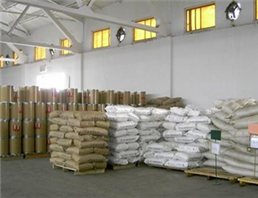
Glyphosate
| Price | $8 |
| Package | 1Kg/Bag |
| Min. Order: | 1Kg/Bag |
| Supply Ability: | 20 Tons |
| Update Time: | 2020-11-16 |
Product Details
| Product Name: Glyphosate | CAS No.: 1071-83-6 |
| EC-No.: 213-997-4 | Min. Order: 1Kg/Bag |
| Purity: 99% | Supply Ability: 20 Tons |
| Release date: 2020/11/16 |
| Product Name: | Glyphosate |
| Synonyms: | KERNEL(R);landmaster;ENVISION(R);(Carboxymethylamino)methylphosphonic acid;GLIALKA;GLYFOS ENVISION;GLYFOS(R);GLYPHOSATE |
| CAS: | 1071-83-6 |
| MF: | C3H8NO5P |
| MW: | 169.07 |
| EINECS: | 213-997-4 |
| Product Categories: | Agro-Chemicals;HERBICIDE;2005/70/EU;GPesticides&Metabolites;OrganophosphorousMethod Specific;Alphabetic;Endocrine Disruptors (Draft)Analytical Standards;EPA;European Community: ISO and DIN;Herbicides;Method Specific;Agro-Products;Phosphorylating and Phosphitylating Agents;plantgrowth |
| Mol File: | 1071-83-6.mol |
 |
|
| Glyphosate Chemical Properties |
| Melting point | 230 °C (dec.)(lit.) |
| density | 1.74 |
| Fp | 230°C |
| storage temp. | APPROX 4°C |
| Water Solubility | 1.2 g/100 mL |
| Decomposition | 230 ºC |
| Merck | 13,4525 |
| Stability: | Stable. Incompatible with metals, strong oxidizing agents, strong bases. May be light sensitive. |
| CAS DataBase Reference | 1071-83-6(CAS DataBase Reference) |
| EPA Substance Registry System | Glycine, N-(phosphonomethyl)-(1071-83-6) |
| Safety Information |
| Hazard Codes | Xi,N,Xn |
| Risk Statements | 41-51/53-62-37/38-36/37/38-36-22 |
| Safety Statements | 26-39-61-2-37-36 |
| RIDADR | UN 3077 9/PG 3 |
| WGK Germany | 2 |
| RTECS | MC1075000 |
| Hazardous Substances Data | 1071-83-6(Hazardous Substances Data) |
| MSDS Information |
| Provider | Language |
|---|---|
| Bronco | English |
| SigmaAldrich | English |
| Glyphosate Usage And Synthesis |
| Outline | Glyphosate, Scientific name: N-(methyl phosphonate) glycine. The pure product is non-volatile white solid with the density being 0.5 and the melting point of about 230 °C which is accompanied with decomposition. At 25 ℃, its water solubility is 1.2%. It is insoluble in common organic solvents. However, its isopropylamine salt can be completely dissolved in water. It is non-flammable, non-explosive, and is stable under room temperature. It is general being processed into amine salt water preparation. It is herbicide of low toxicity. It has systemic effect with a broad weeding spectrum. It has controlling effect on plant belongs to more than 40 families, including both monocots and dicots, annual and perennial, herbaceous plants and shrubs. It is very destructive on the underground tissue of the deep rooted perennial weeds and can reach a depth being out of the reach of general farm machinery. It is suitable to be applied to sugar cane, tea, mulberry, sisal, rubber, trees, and orchards for destructive weeding. It can be produced from raw materials such as monochloroacetic acid, ammonia, phosphorous acid, formaldehyde, and sulfuric acid. Glyphosate is a kind of organic phosphorus herbicide. It is a kind of non-selective systemic stem leaf herbicide. It was developed by the Monsanto Company in the early 1970s. It is typically used in the form of its isopropylamine salt or sodium salt. The isopropylamine salt is the active component of a famous trademark herbicide "Roundup". The proto-drug is a white or slightly yellow crystalline powder with the melting point being at 232~236 ℃ (decomposition), it is easily soluble in water, acetone, chlorobenzene, ethanol, kerosene and xylene. Glyphosate is a highly efficient, low toxicity, broad-spectrum systemic Herbicide. This product can dissolve the surface wax layer of the weed leafy shoots stem and rapidly penetrate into the plant conduction system effects, thus resulting in the death of the weeds. It can effectively control annual, biennial Gramineae, sedges and broadleaf weeds as well as perennial weeds such as sexual abuse grass, nutsedge, and bermudagrass. It is therefore widely applied to the chemical weeding in orchards, mulberry fields, tea plantations, rubber park, prairie update, forest firebreak, railways, highways wasteland and no-tillage farmland. |
| Mechanism | Glyphosate mainly takes effects by blocking the biosynthesis of aromatic amino acid, namely the biosynthesis of phenylalanine, tryptophan and tyrosine via shikimic acid pathway. It has inhibitory effect on the 5-enolpyruvylshikimate-3-phosphate synthase (EPSP synthase), which can catalyze the conversion between shikimate-3-phosphate and 5-enolpyruvate phosphate into 5-enolpyruvylshikimate-3-phosphate (EPSP), so glyphosate interfere with this biosynthesis of enzymatic reactions, resulting shikimic acid accumulation in vivo. [4] In addition, the glyphosate can also suppress other kinds of plant enzymes [5], [6] and the animal enzyme [7] activity. The metabolism of glyphosate in higher plants is very slow and it has been tested that its metabolite is aminomethylphosphonic acid and methyl amino acetic acid. Because of the high working performance, slow degradation, as well as high plant toxicity of glyphosate in plants body, the glyphosate is regarded as a kind of ideal controlling perennial weeds herbicides. [8] We are currently studying the culture of glyphosate resistant plants. Biochemists have isolated from microorganisms of strains with excess amount of EPSP and further introduce the gene into tobacco and soybean tissues in order to cultivate the plants resistant to glyphosate. |
| Usage of glyphosate pesticide | 1. weeding of orchards and mulberry: annual weeds: apply 0.5-1 kg of 10% water preparation per acre; for controlling of perennial weeds, use 1-1.5 kg of water preparation per acre. Mix with 20-30 kg of water and directly spray the weed stems and leaves. 2. Farmland weeding: for weeds emerged before the reverse cropping and seeding in the farmland, the dosage can be referred to the orchard weed section. For medication during cotton growth, it requires the application directed spray with a hood. Apply 0.5-0.75 kg of 10% water preparation per acre and mixing with 20-30 kg of water. 3. Weeding of leisure place, Tanabe, roadside; during the 4-6 leaf stage of weeds, apply 0.5-1 kg of 10% water per acre, add 100 mL of diesel and mix with 20-30 kg of water and apply weed spray. |
| What causes the difference of glyphosate herbicide efficacy? | First, different of tillage method can lead to different efficacy of glyphosate. It is better to apply glyphosate herbicide for no-till sowing. Apply it at 1-3 days before the sowing of the crop. In order to keep pace with the seeding season, it can also be sprayed after sowing. Applying it before sowing will not affect the seed germination and seedling growth of the crops due to the absence of direct contact between glyphosate with the seeds, thus being able to give a better weeding and weed suppression effects are than plowing. As no-tillage doesn’t turn the weed seeds of the inner layer of soil into topsoil layer, it is difficult for weed seeds to get germinated. Once the crops have grown and get closing, the weed seeds and seedlings are not able to get germinated and grow due to the absence of the sunshine. Therefore, the herbicidal effect of glyphosate will be better when being used at no-tillage land than being used in plowing land. Second, administration of drugs during the different growth stage of weeds can also cause difference in the drug efficacy. Glyphosate is a kind of systemic herbicide and thus should be administrated during the most vigorous growth stage of weed. For time, it is generally from March to October. From the botanical characteristics, the best time for administration should be before flowering period. General, the height of annual weed is about 15 cm while the height of perennial weeds is about 30 cm. Spray of 6-8 leaves is the most suitable. If you don’t take the growth stages of weeds into consideration, and blindly apply the glyphosate for weeding until the aging stage of weed, of course you will not receive an ideal control effect. For weeding between rows of crops, if there is certain height gap between higher crop plants and weeds, the treatment effect is good and safe. At this time when using glyphosate as herbicide, due to the aging of the lower leaves, the weed has low sensitivity to the drug and also has poor conduction property so that the drug has little effect on crops. For weeding between the rows of corn, shelved beans as well as between rows of melons, you can all use this method. Third, there will be differences in the efficacy upon spraying different concentration. According to the survey, upon the application of glyphosate, farmers don’t have strict rule on the drug concentration which is unlike other pesticides. Farmers mostly apply it in a large arbitrary form with either increasing the dose or reducing the dose occurring. For determining the drug concentration, we must consider the type of weeds. Common weeds is sensitive to glyphosate and can be killed by low doses of the drug solution while we should increase the concentration upon controlling broadleaf weeds; For some perennial rhizome reproduction worst weed, you need to apply higher concentrations. The longer the foliar age, the higher the resistance will be, and thus the dosage should also be increased. For example, upon controlling weeds in orchards, for annual grass weeds, we can apply 500 to 700 grams of 10% Glyphosate with water of 30-40 kg; For example, to control the annual broadleaf weeds, the liquid dosage should be increased to 750-1000 grams; for controlling perennial weed, the dosage should be increased to 1250-1500 grams. But upon overdose, it will quickly kill the conducting tissues of the plant which is not good for the drug liquid absorption so that the efficacy will be reduced, and therefore for economic medication, you should first use a lower concentration to kill the young grass, and then after about 10 days, we should apply corresponding concentration for directional spraying weed. |
| How to fully exert the herbicidal effect of glyphosate | First, the drug liquid of glyphosate will be transferred to a large number of weed rhizome tissues before playing the herbicidal effect. This requires that the weed contain a lot of leaves. Prior to use, if the usage area of weed is small with low photosynthesis, then the stored nutrient in roots will be conducted from the bottom to up. At this time, due to the small amount of drug delivered down into roots, it can’t play enough herbicide effect. In contrast, during the late stage of weed growth, due to the high photosynthesis intensity, the photosynthetic products will be delivered from top to bottom, which can yield the best drug efficacy. Therefore, one of the most important basic principles for using glyphosate is to select the best treatment period. For example, for the use of glyphosate for weed control in Maize field, it is preferably to administer drug when corn has a height of 1.5 meters with 2-3 tablets old leafs in low place and grass height has reached 10 cm. The second is to pay attention to the environmental conditions. At the range of 24-25 °C, with the increasing temperature, the absorption amount of weeds on the glyphosate can be doubled. Therefore, higher atmospheric temperature can give a better performance of the drug than lower temperature. High air relative humidity can extend the wetting time of the drug liquid in the plant surfaces which is good for conducting the drug. The drought soil and low water content is not good for the metabolism of plants as well as for the conductivity of plants inside the plant body, and thus leading to a low drug efficacy. Again on the combination and mixing between herbicide glyphosate and other kinds of herbicide, since some farmers would like kill a variety of grass, in order to save labor, they may arbitrarily add other kinds of glyphosate herbicide, but the results may not good because some herbicides can’t be mixed with glyphosate such as MCPA, Gramoxone and other fast-acting herbicides in order to avoid that the aboveground part of being subject to premature death, causing the loss of its ability for systemic conductivity of glyphosate and reducing the effects of glyphosate on killing underground rhizomes of weeds. But adding some plant growth regulator and adjuvant to the glyphosate can further improve the control effect. The fourth is to select the best method of application. The medication method selection is very important for the weed control of glyphosate weed control because in a certain range of concentrations, the higher the concentration is, the finer the sprayer droplet will be, this is good for the absorption of the weeds. At the same concentration, higher amount will give better herbicidal effect. Addition of 0.1% detergent to the glyphosate, or adding 30 g of diesel per acre could enhance drug distribution, penetration and adhesion and also improve the control efficiency. |
| Security issues when being used on crops | Glyphosate is a kind of destructive herbicide and therefore may pose security risk to the crops if used improperly. Some farmers use glyphosate for ridge weeding. However, due to the drift of glyphosate, it causes toxicity to crops aside. There are also cases that farmers don’t wash the sprayer in accordance with the requirements, and therefore, the residue glyphosate cause toxicity to other drugs when they spraying other pesticides. In case of injury in rice, in mild case, there may be leaf chlorosis with severe growth retardation; in severe cases, early death, non-heading or deformed spike may occur, causing loss of rice production. |
| Chemical Properties | The pure product is white solid with the m.p being 230 °C (decomposition). It is generally insoluble in common organic solvents; at 25 °C, the solubility in water is 1.2%. It is usually made into glyphosate amine salts such as isopropylamine salt and dimethylamine salt, etc. it can also be made from sodium salt. The glyphosate salt is soluble in water. |
| Toxicity | Acute oral-rat LD50 is 4320mg/kg, acute percutaneous-rabbit LD50> 5000mg/kg (7940mg/kg); it has mild stimulus on skin and eyes of rabbits. Using a dose 2000 mg/kg for feeding rats for 90d causes no abnormal symptoms. Animal tests exhibit no teratogenic, carcinogenic, mutagenic effect. Trout-LC50> 1000mg/L, Daphnia 780mg/L. It has low toxicity to bees and birds. |
| Uses | It was originally used for controlling of grass weeds in rubber plantations and can allow the rubber tapping a year earlier and increase the production capacity of the old rubber tree. It is currently gradually extended to forestry, orchards, mulberry fields, tea plantations, rice and wheat, and rape rotation land. Different kinds of weeds have different sensitivity to glyphosate and therefore the dosage is also different. For example, for weeds such as barnyardgrass, green bristlegrass, Alopecurus aequalis, Eleusine indica, crabgrass, cleavers and other annual weeds, the dosage calculated according to the amount of the active ingredient should be 6~10.5 g/ 100 m2. For semen plantaginis, horseweed, and dayflower, the dosage of being an active ingredient should be 11.4~15g/100m2. For cogon, Panicum repens, and reeds, the dosage can be 18~30 g /100m2, generally the used amount of water should be 3~4.5 kg. Apply direct and even spray to the stems and leaves of the weed. It is a kind of non-selective, post-emergent herbicide with short residue life. It can be used for control of perennial deep roots weeds, annual and biennial weeds, sedges and broadleaf weeds. Glyphosate is an organic phosphorus herbicide and its herbicidal property was found by D. D. Baird (US) in 1971. Until to the 1980s, it has become an important species in the world herbicide. |
| Production method | Dialkyl phosphite ester method Take glycine, dialkyl phosphite, and paraformaldehyde as raw material and go through addition, condensation, hydrolysis reaction to obtain the product with the purity of 95% and total yield 80% as well as a relative low cost. Chloromethyl phosphoric acid method Preparation of chloromethyl phosphoric acid The phosphorus trichloride and paraformaldehyde were reacted in 200~250 ℃ (corresponding pressure 2.5~3.0 MPa) for 3~5h to obtain the chloromethyl phosphonyl dichloride. It was reported that the ratio is that phosphorus trichloride: polyoxymethylene (1.2~1.5): 1 (mol). In the absence of a catalyst, the yield is 67%. This can be increased to 80% to 89% based on using Lewis acid as the catalyst. The domestic research has not yet reached the level of literature. Hydrolysis can be obtained chloromethyl phosphoric acid. Cl2P (O) CH2Cl + H2O → (HO) 2P (O) CH2Cl + HCl The synthesis of glyphosate: use equal mole of chloromethyl phosphonic acid and glycine, in the aqueous sodium hydroxide (pH> 10), the reaction was refluxed for 10~20h with further acidification to obtain the hydrochloric acid and glyphosate. If being acidified to a pH 4, that’s monosodium salt; the pH value is 8.5 for disodium salt. If glyphosate was added with equal molar of dimethylamine, giving glyphosate dimethylamine salt. Iminodiacetic acid method Preparation of the iminodiacetic acid; the chloroacetic acid, in the presence of calcium hydroxide, is reacted with aqueous ammonia, and undergo acidification, and then sodium hydroxide neutralization to get a yield of 85%. Or take hydrocyanic acid as raw materials, have it reacted with formaldehyde and ammonia to obtain a yield of 90%. Preparation of PMIDA The iminodiacetic acid and formaldehyde, phosphorous acid are subject to heating reaction in the presence of sulfuric acid to get PMIDA with the yield being 90%. Synthesis of glyphosate: PMIDA is mixed with water, with an excess of hydrogen peroxide in the presence of equal molar of sulfuric acid, etc., for heating reaction to obtain glyphosate with a yield of 90% to 95%. There are many ways for PMIDA oxidation, in addition to hydrogen peroxide; we can also use concentrated sulfuric acid, precious metals (palladium, rhodium, etc.) oxide, and activated carbon air oxidation or electrolysis method. For example, 10 parts of PMIDA, 170 parts of water and 0.6 parts of 5% palladium-charcoal catalyst were placed in an autoclave, put through oxygen to 2.07X105Pa, reacted at 90~100 °C to obtain it with the yield of 96% and purity of 97%. There are two methods of production from sub-categories, namely, method 1 using iminodiacetic acid (IDA) as raw material and method 2 using glycine-dialkyl phosphite as raw materials, wherein the glycine-dialkyl phosphite method has a largest production capacity, the largest number of production companies, about 80% of the total production of glyphosate production accounts reached 70,000 t; Production capacity of IDA law is nearly 30,000 t. There are four methods in subdivision: 1) homemade (by chloroacetic acid method) IDA, thought the method of PMIDA being subject to oxidation of concentrated sulfuric acid has gained some progress since the 1980s, owing to the large amount of strong calcium chloride acidic wastewater, causing a low yield (IDA yield of about 70%), and can only be made into water preparation with the highest annual output of 2000t (10% water). Upon entering into the 1990s, the amount of the produced company gradually reduced with lower yields. 2) Company of self-production of trimethyl phosphite for the production of glyphosate; this method apply water instead of methanol as solvent, with sodium hydroxide instead of triethylamine as the catalyst which reduces the post-treatment with a yield of 65%. However, owing to the higher price of trimethyl than dimethyl, only companies of self-production of trimethyl can have the cost being with certain market competitiveness. 3) There are many enterprises for applying dimethyl phosphite for glyphosate production; it has large-scale production plant. With optimized production process, advanced equipment and automatic systems, this method has made certain technical progress with the product quality indicators reaching the international market requirements, and therefore China mainly uses this process. 4) Homemade (use diethanolamine for dehydrogenation oxidation) IDA or outsourcing IDA, the use of hydrogen peroxide oxidation of PMIDA for preparation of glyphosate. Fixed material consumption: paraformaldehyde 500 kg/t, methanol 500kg/t, glycine 700 kg/t, triethylamine 50 kg t, dimethyl phosphite 1000 kg/t, hydrochloric acid 3000 kg/t |
| Flammability and hazard characteristics | combustion produces toxic gases of nitrogen oxides and phosphorus oxides |
| Storage characteristics | Treasury: ventilation, low-temperature and drying; store separately from food raw material |
| Extinguishing agent | Dry powder, foam, sand |
| General Description | Odorless white powder. Decomposition begins at approximately 419°F (darkens). pH (1% solution in water) 2.5. |
| Reactivity Profile | Glyphosate may react with galvanized steel or unlined steel (except stainless steel) containers to produce hydrogen gas which may form a highly combustible or explosive gas mixture. Glyphosate can react with caustic (basic) materials to liberate heat. Glyphosate is corrosive to iron. |
| Fire Hazard | Flash point data for Glyphosate are not available; however, Glyphosate is probably combustible. |
| Toxicity | LD50 in rats, mice (mg/kg): 4873, 1568 orally (Bababunmi) |
| Glyphosate Preparation Products And Raw materials |
| Raw materials | Sodium hydroxide-->Hydrochloric acid-->Methanol-->Sulfuric acid -->Triethylamine-->Ammonium hydroxide-->Ammonia-->Hydrogen peroxide-->Formaldehyde-->Phosphorus trichloride-->METHYLAMINE-->Glycine-->Paraformaldehyde-->Chloroacetic acid-->Hexamethylenetetramine-->Calcium hydroxide -->2,2'-Iminodiethanol-->HYDROGEN CYANIDE-->Trimethyl phosphite-->SURFACTANT-->Iminodiacetic acid-->Dimethyl phosphonate-->Phosphorous acid-->3-Amino-4-chlorobenzenesulfonic acid-->METHYLPHOSPHONIC ACID-->N-(Carboxymethyl)-N-(phosphonomethyl)-glycine |
Company Profile Introduction
Longyan Tianhua Biological Technology Co., Ltd is located in Longyan city, Fujian Province, China. It is a large-scale high-tech integrated enterprise dedicated to the research, development and sales of fine chemicals, pharmaceutical raw material intermediates, food and feed additives.
The company has its own research and development base, equipped with advanced production equipment and efficient and precise testing instruments, has set up a strict and scientific quality management system, and constantly committed to technological innovation, product innovation and management innovation, so as to ensure that our products have super competitiveness in the same industry.?
Company's main: Phenformin Hydrochloride, Chlorhexidine Acetate, Indomethacin Biphenyl benzyl azole dyclonine hydrochloride clorprenaline hydrochloride griseofulvin chloramphenicol maleic acid to guangxi pp qi, fucus xanthine tert-butyl of hydroxy anisole (BHA), ammonia, benzene pteridine zonisamide moxifloxacin mother nucleus moxifloxacin side chain moxifloxacin hydrochloride clobetasol propionate tranexamic acid raw material, and so on.?
The annual sales volume of the company is around 3 million DOLLARS. Its products have been sold to more than 40 countries and regions all over the world, and have been well received. Moreover, the buyback rate of customers is very high.
Longyan Tianhua Biotechnology Co., LTD. Is looking forward to long-term cooperation with you.
You may like
Recommended supplier
| Product name | Price | Suppliers | Update time | |
|---|---|---|---|---|
| $10.00/1KG |
VIP6Y
|
Hebei Weibang Biotechnology Co., Ltd
|
2024-12-05 | |
| $39.00/500mg |
VIP5Y
|
TargetMol Chemicals Inc.
|
2024-11-19 | |
| $0.00/1KG |
VIP3Y
|
Hebei Weibang Biotechnology Co., Ltd
|
2024-10-29 | |
| $100.00/1kg |
VIP1Y
|
HEBEI SHENGSUAN CHEMICAL INDUSTRY CO.,LTD
|
2024-08-21 | |
| $4.00/1KG |
VIP4Y
|
Hebei Chuanghai Biotechnology Co,.LTD
|
2024-08-21 | |
| $6.00/1kg |
VIP1Y
|
HebeiShuoshengImportandExportco.,Ltd
|
2024-08-06 | |
| $0.10/1KG |
VIP6Y
|
Shaanxi Dideu Medichem Co. Ltd
|
2024-07-07 | |
| $8.00/1kg |
VIP1Y
|
Shandong Deshang Chemical Co., Ltd.
|
2024-06-24 | |
| $6.00/1KG |
VIP1Y
|
Hebei Longbang Technology Co., Ltd
|
2024-05-29 | |
| $6.00/1KG |
VIP1Y
|
Hebei Saisier Technology Co., LTD
|
2024-05-29 |
- Since: 2019-10-11
- Address: Room 201, 11 Xinhouying Road, Xicheng Lian, Xinluo District, Longyan City, Fujian Province, China
INQUIRY







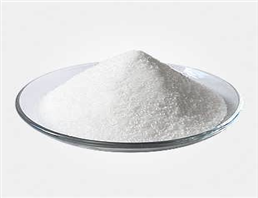
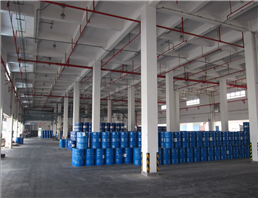
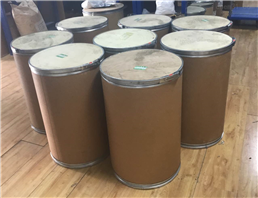
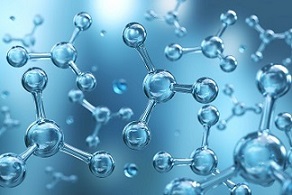
 China
China